
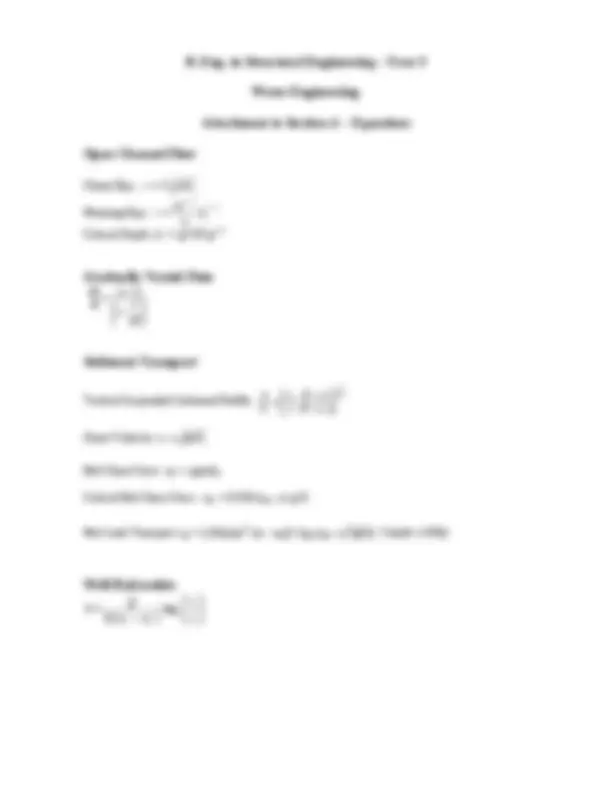
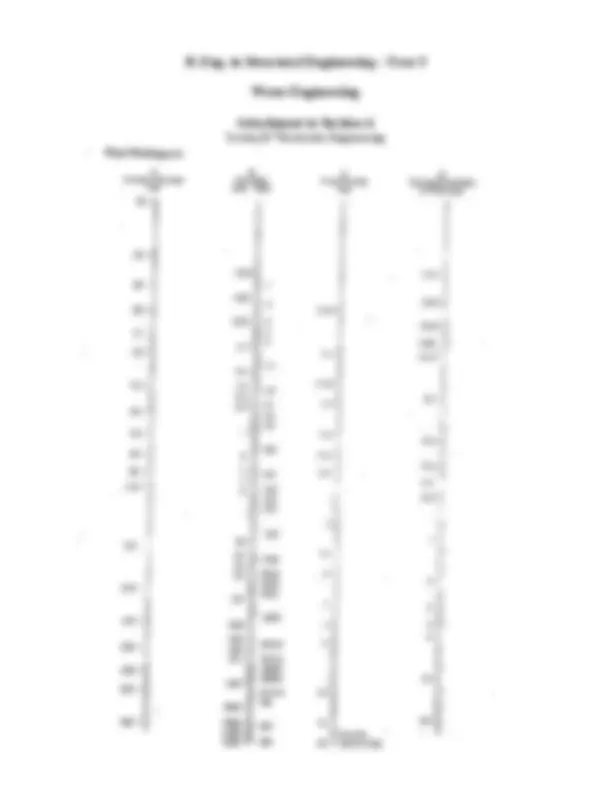
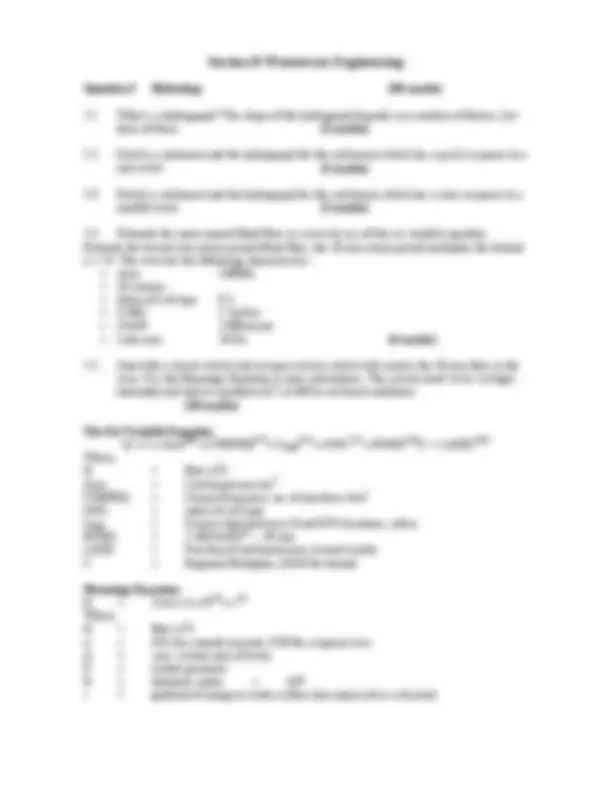
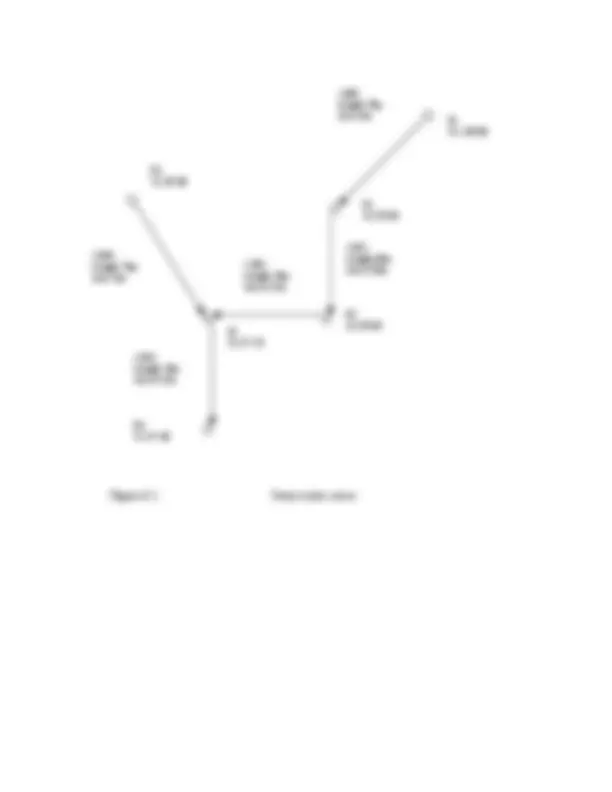
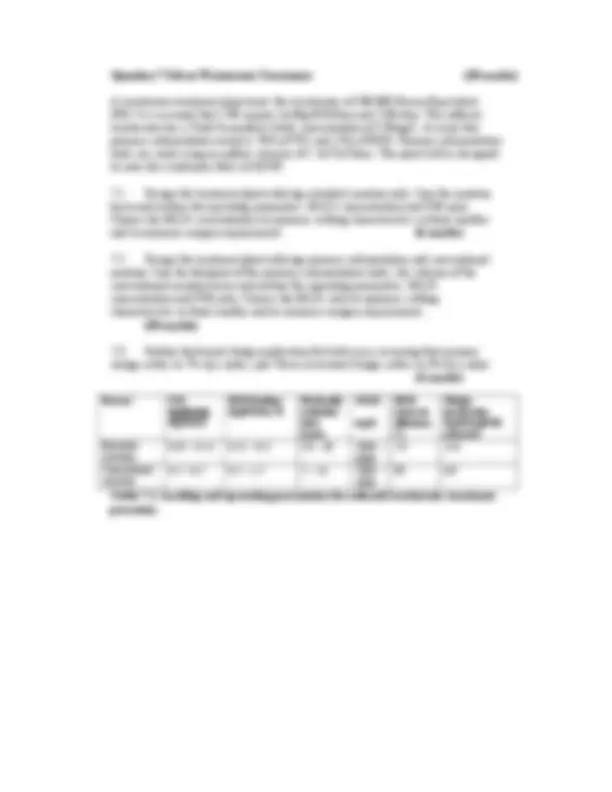
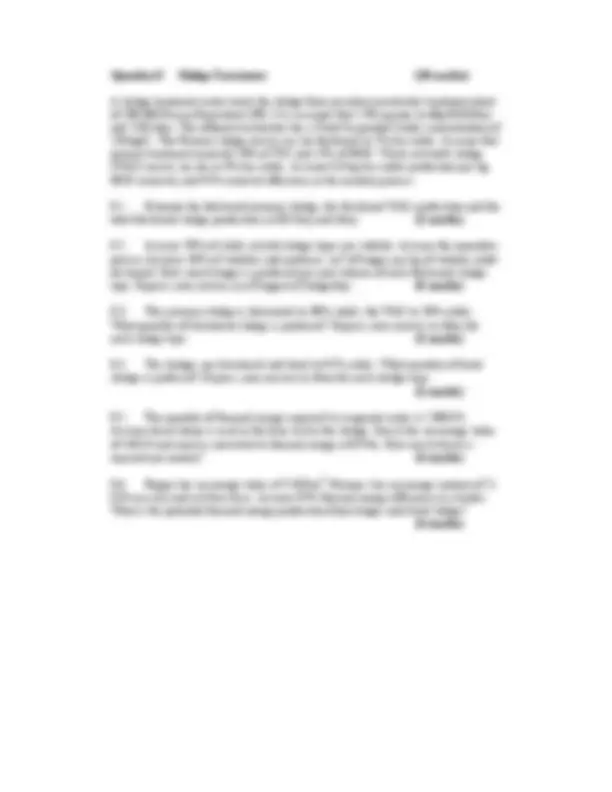


Study with the several resources on Docsity

Earn points by helping other students or get them with a premium plan


Prepare for your exams
Study with the several resources on Docsity

Earn points to download
Earn points by helping other students or get them with a premium plan
Community
Ask the community for help and clear up your study doubts
Discover the best universities in your country according to Docsity users
Free resources
Download our free guides on studying techniques, anxiety management strategies, and thesis advice from Docsity tutors
Main points of this past exam are: Mechanisms of Sediment Transport, Phenomenon of River Flooding, Water Surface Profile Upstream, Specific Energy, Hydraulic Characteristics, Water Treatment, Dissolved Air Flotation, High Rate Clarifiers
Typology: Exams
1 / 11

This page cannot be seen from the preview
Don't miss anything!







Answer five questions in total, a minimum of Examiners: Dr. J. Harrington two questions from each Section Dr. J.D. Murphy Use separate answer books for each section Prof. P. O’ Donoghue Programmable calculators are not permitted Mr. T. Corcoran All questions carry equal marks Attachments including figures and equations
Note: Attachments with equations and flow nomogram
(b) A river has the following hydraulic characteristics: Q = 450 m^3 /sec, 50m width, 6m depth and bed slope of 3 x 10 -4^. Find the hydraulic mean depth, the critical bed shear stress, the actual bed shear stress and the minimum stable particle size. If the sediment actually has a typical diameter D of 0.01m estimate the bed load transport rate using Shields (1936). Assume the sediment to have a density of 2650 kg/m^3. Estimate the life expectancy of a reservoir of 5x 10^6 m^3 capacity into which the river discharges if the sediment has a porosity of 0.35. Comment on other possible mechanisms of sediment transport. (14 marks)
(b) A 9.15 m thick layer of sandy soil overlies an impermeable rock. Ground water level is at a depth of 1.22 m below the top of the soil. Water was pumped out of the soil from a central well at a rate of 5680 kg/min and the drawdown of the water table was noted in two observation wells. These two wells were on a radial line from the centre of the main well at distances of 3.05 m and 30.5 m. During pumping the water level in the well nearest the pump was 4.57 m below ground level and in the furthest well was 2. m below ground level. Estimate the K value of the soil. (8 marks)
(b) A water supply scheme is required for an area which includes a 3 teacher, 80 pupil national school, an estimated eventual maximum number of houses of 25 and a single large dairy farm with 100 dairy cows and up to 25 calves. Take dairy cow water demand as 150 l/head/day, calf water demand as 22 l/head/day and 50 l/day per pupil and staff.
The water supply takes water from a nearby river, which can supply the community all year round. The lowest estimated water level in the river is +7m O.D., the highest is +9.5m O.D.
A pump is required for supply and must provide the required flow at a minimum pressure head of 10m. Determine the pump requirements given information on two points within the area to be supplied:
Point A (an intermediate point within the supply scheme) Distance from Supply Point: 2100m, Discharge Elevation: +19m O.D.
Point B (the furthest point within the supply scheme) Distance from Supply Point: 2650m, Discharge Elevation: +18m O.D.
Use the attached flow nomogram for a polyethylene pipe. (11 marks)
Section B Wastewater Engineering
Question 5 Hydrology (20 marks)
5.1 What is a hydrograph? The shape of the hydrograph depends on a number of factors; list three of these. (2 marks)
5.2 Sketch a catchment and the hydrograph for the catchment, which has a quick response to a rain event. (^) (2 marks)
5.3 Sketch a catchment and the hydrograph for the catchment, which has a slow response to a rainfall event. (2 marks)
5.4. Estimate the mean annual flood flow in a river by use of the six variable equation. Estimate the twenty year return period flood flow; the 20 year return period multiplier for Ireland is 1.54. The river has the following characteristics: Area 1000Ha 10 streams Index of soil type 0. S1085 2.5m/km SAAR^ 1400mm pa Lake area 20 Ha (4 marks)
5.5. Size both a closed culvert and an open culvert, which will convey the 20 year flow in the river. Use the Mannings Equation in your calculations. The culvert needs to be 1m high internally and laid at a gradient of 1 in 400 to suit local conditions. (10 marks)
The Six Variable Equation Q = C x Area 0.94^ x STMFRQ 0.27^ x S 1085 0.16^ x SOIL 1.23^ x RSMD 1.03^ (1 + LAKE) -0. Where, Q = flow m^3 /s Area = Catchment area km^2 STMFRQ = Stream Frequency, no. of junctions /km^2 SOIL = index of soil type S 1085 = Stream slope between 10 and 85% locations, m/km RSMD = 2.48(SAAR) 0.5^ – 40 mm LAKE = Fraction of catchment area covered in lake C = Regional Multiplier, 0.018 for Ireland
Mannings Equation Q = (1/n) x A x R2/3^ x s 1/ Where, Q = flow m^3 /s n = 0.01 for smooth concrete, 0.03 for a typical river A = cross section area of water P = wetted perimeter R = hydraulic radius = A/P s = gradient of energy or water surface line expressed as a decimal
QUESTION 6. DSE3. Summer 2006.NAME:MODIFIED RATIONAL METHOD
Calculation Sheet.
PipeNo.
PipeLength (m)
Fall (m)
Slope M/m
Diamete
r (m)
Velocit
y m/sec
Time
of entry(min)
Timeofflow(min)
Timeofconc.(min)
Imp.Area(Ha)
Σ Imparea(Ha)
Rain mm/hr
Q L/sec
Capacit
y L/sec
Req Diamete
r (m)
Upstream
CLIL
Downstrea
m CL
IL
1.000 1.001 1.002 2.000 1.
Figure 6.1. Storm water sewer
F CL 100.
F CL 99.
F CL 98.
Length 70m Area 1ha
Length 60m Area 0.8ha
F CL 97.
Length 50m Area 0.5ha
F CL 99.
Length 70m Area 1ha
Length 50m Area 0.5ha
F CL 97.
Question 8 Sludge Treatment (20 marks)
A sludge treatment centre treats the sludge from an urban wastewater treatment plant of 500 000 Person Equivalent (PE). It is assumed that 1 PE equates to 60g BOD/day and 220L/day. The influent wastewater has a Total Suspended Solids concentration of 250mg/L. The Primary sludge arrives on site thickened to 7% dry solids. Assume that primary treatment removed 50% of TSS and 25% of BOD. Waste activated sludge (WAS) arrives on site at 3% dry solids. Assume 0.6 kg dry solids production per kg BOD removed, and 95% removal efficiency in the aeration process.
8.1. Estimate the thickened primary sludge, the thickened WAS production and the total thickened sludge production in tDS/day and t/day. (3 marks)
8.2. Assume 70% of solids in both sludge types are volatile. Assume the anaerobic process destroys 40% of volatiles and produces 1m^3 of biogas per kg of volatile solids destroyed. How much biogas is produced per unit volume of each thickened sludge type. Express your answer in m^3 biogas/m^3 sludge/day. (5 marks)
8.3. This primary sludge is dewatered to 30% solids; the WAS to 20% solids. What quantity of dewatered sludge is produced? Express your answer in t/day for each sludge type. (2 marks)
8.4. The sludges are dewatered and dried to 92% solids. What quantity of dried sludge is produced? Express your answer in t/day for each sludge type. (2 marks)
8.5. The quantity of thermal energy required to evaporate water is 2.88GJ/t. Assume diesel alone is used in the drier to dry the sludge. Diesel has an energy value of 44GJ/t and may be converted to thermal energy at 85%η. How much diesel is required per annum? (4 marks)
8.6. Biogas has an energy value of 21MJ/m^3. Biomass has an energy content of 21 GJ/t on a dry and ash free basis. Assume 85% thermal energy efficiency in a boiler. What is the potential thermal energy production from biogas and dried sludge? (4 marks)